Why Craig Gordon wasn't shown a red for Alloa foul
This article contains affiliate links. We may earn a small commission on items purchased through this article, but that does not affect our editorial judgement.
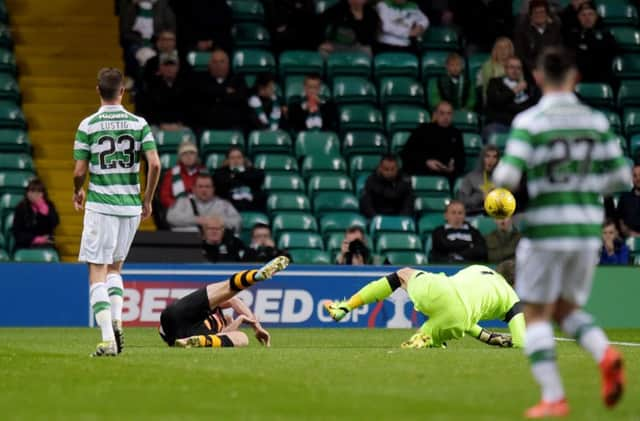

Before we get to the heart of the matter, it’s worth clearing up one point: it’s clearly not denying an obvious goalscoring opportunity. Spence is going wide and there are defenders back. The fact that it’s the keeper making the challenge doesn’t really change that.
Let’s start by looking at Alan Muir’s positioning. It could be better. He’s originally anticipating a Celtic attack before Goodwin wins the ball, and at that stage he’s where you’d expect him to be, in the middle of the park near the ball. However, he is slow to react to the long ball forward, and only realises too late that Spence might get there. This is not all that uncommon in fairly one-sided games. Celtic had been doing most of the attacking, so a rare Alloa attack probably caught him by surprise, particularly because it was on the break. He’s not even in the frame until a second or so after Gordon makes the challenge, so he’s probably 40-50 yards away. To his credit he does appear to have moved towards the left touchline in order to get as clear a view as possible. The position of the foul on the park means his assistants cannot provide any help. One has a similar view to Muir from further away, the other is right behind the challenge on the opposite side of the park.
Advertisement
Hide AdAdvertisement
Hide AdThe tackle looks really bad on first viewing, but when you break it down, it’s wild but not particularly dangerous. The first thing to note is that it is a 50-50 ball, meaning neither player is in possession before the tackle. If you look at Picture 1, you’d struggle to pick a favourite when the ball is in the air. This is a bit different to a scenario where the Alloa player has the ball and Gordon takes him out.
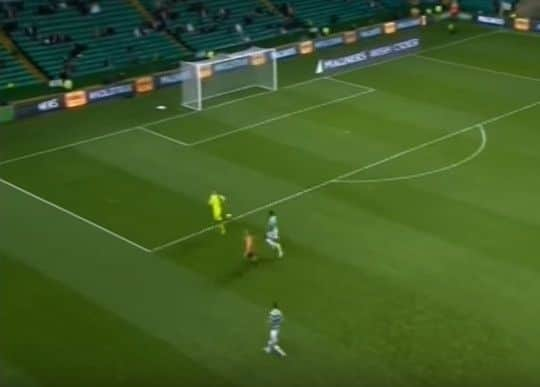

In Picture 2, you can see that he is clearly making an attempt to play the ball. In reality, a player should never be challenging for a ball that high in the air using his foot. They should accept certain balls aren’t there to be won. However, the fact that the challenge is misjudged does not make it a red card.
The action in Picture 3 is what most people are basing their judgements on. If you showed a referee that image then 100 times out of 100 he’ll tell you that it’s a red card. However, it’s a little bid misleading. It looks like Gordon’s studs are going into the body of Spence. However, when you see the same picture from the other angle (Picture 4), you can see that his leg is actually across Spence. Essentially, it’s a ridiculous mid-air trip rather than a kung fu kick, which is how it’s been described. It’s not a Nigel de Jong v Fernando Alonso situation. It’s from the side rather than head on, which is really important in this respect.
There are three key phrases in the definition of serious foul play in the new Laws of the Game that we need to consider:
• “lunges at an opponent”
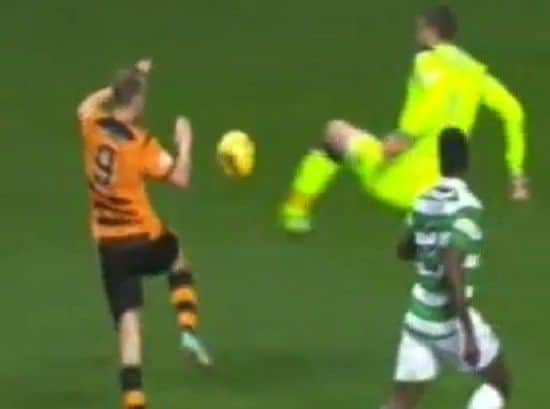

It’s up to your own interpretation, but we don’t believe it applies here. It doesn’t happen at high speed, and his main intention is to take the ball rather than the opponent.
• “excessive force”
It may be a ludicrous way to challenge for the ball, but there isn’t a great deal of actual force in the tackle.
• “endangers the safety of an opponent”
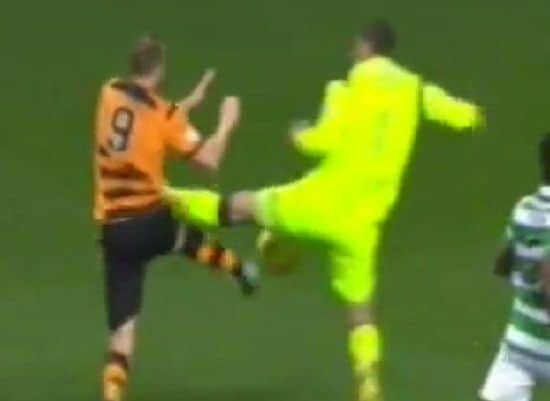

This is the phrase which would most likely see him sent off. You could certainly argue Spence could have been hurt by this challenge. However, the biggest risk to him comes not from the actual physical challenge from Gordon (at most he’s going to get a bruise), but from the way in which he falls. In some senses, this is not hugely different from any aerial challenge, but you could still argue that Gordon put him in that position. If a ref chose to send him off for that reason, he could have little complaint, but at the same time it’s not clear cut by any means.
In summary, it’s a ludicrous and wild challenge, and a case could definitely be made for it being a red card. However, a yellow card was not an incorrect decision. It is a misjudged and reckless challenge which was nowhere near as dangerous as it looked on first viewing. Having said that, Alan Muir only saw it once, and perhaps didn’t have the sort of view where he could consider all the factors outlined above. It is more likely that the yellow card simply stemmed from him being sure that it was a foul, but not quite having seen enough to know for sure that it was a red.
Advertisement
Hide AdAdvertisement
Hide Ad• Craig Anderson is a former fully qualified referee. He is also the man behind SPLStats on Twitter.
SEE ALSO
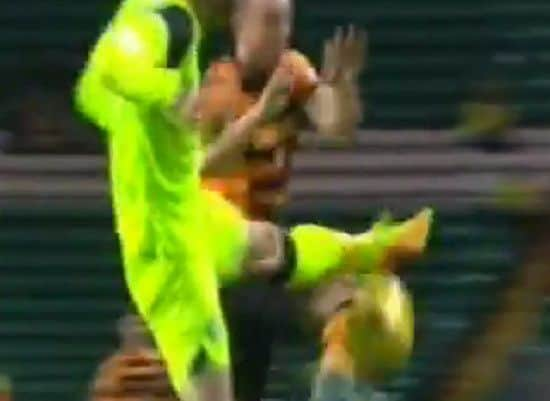

DOWNLOAD THE SCOTSMAN APP ON ITUNES OR GOOGLE PLAY